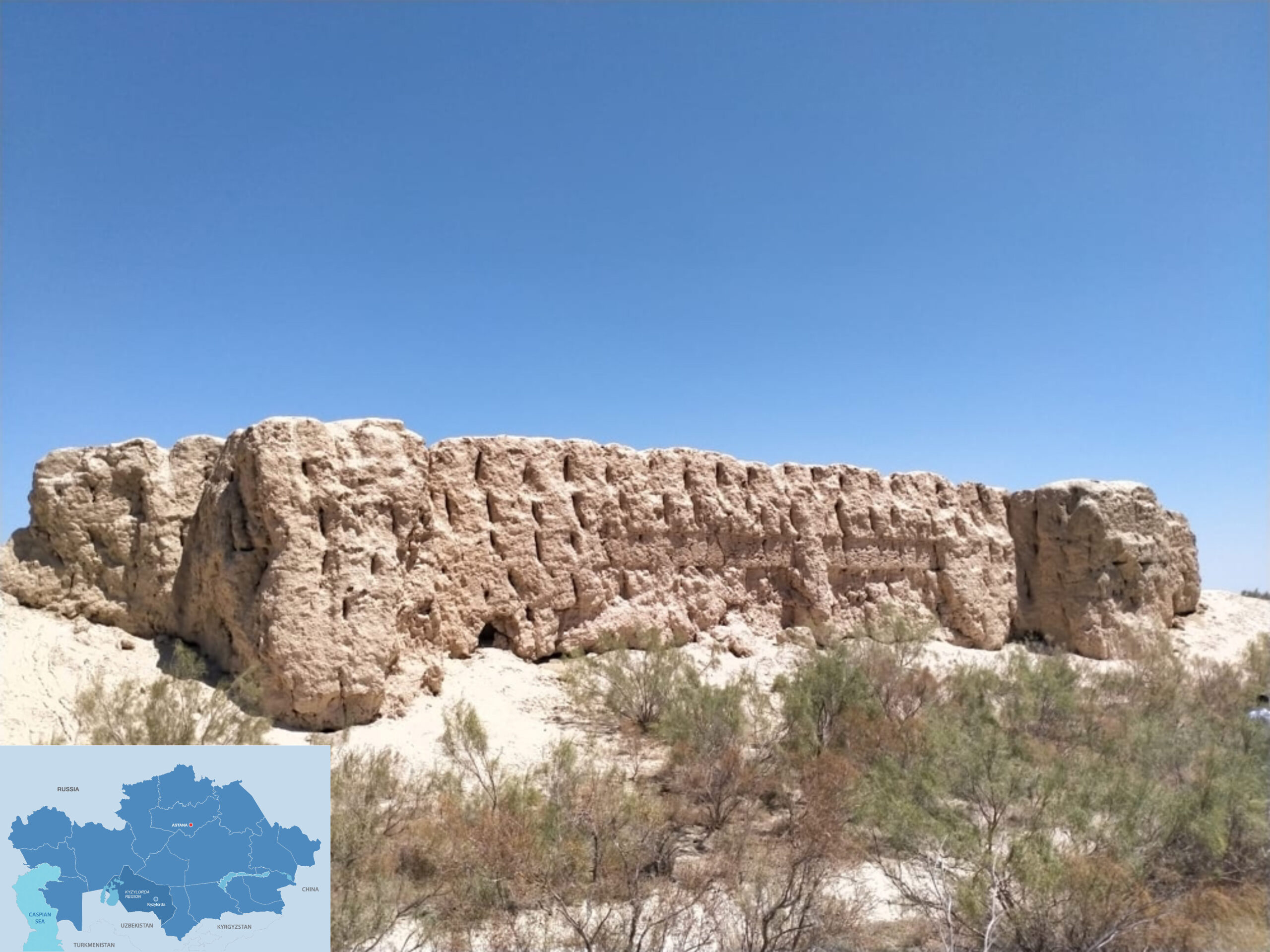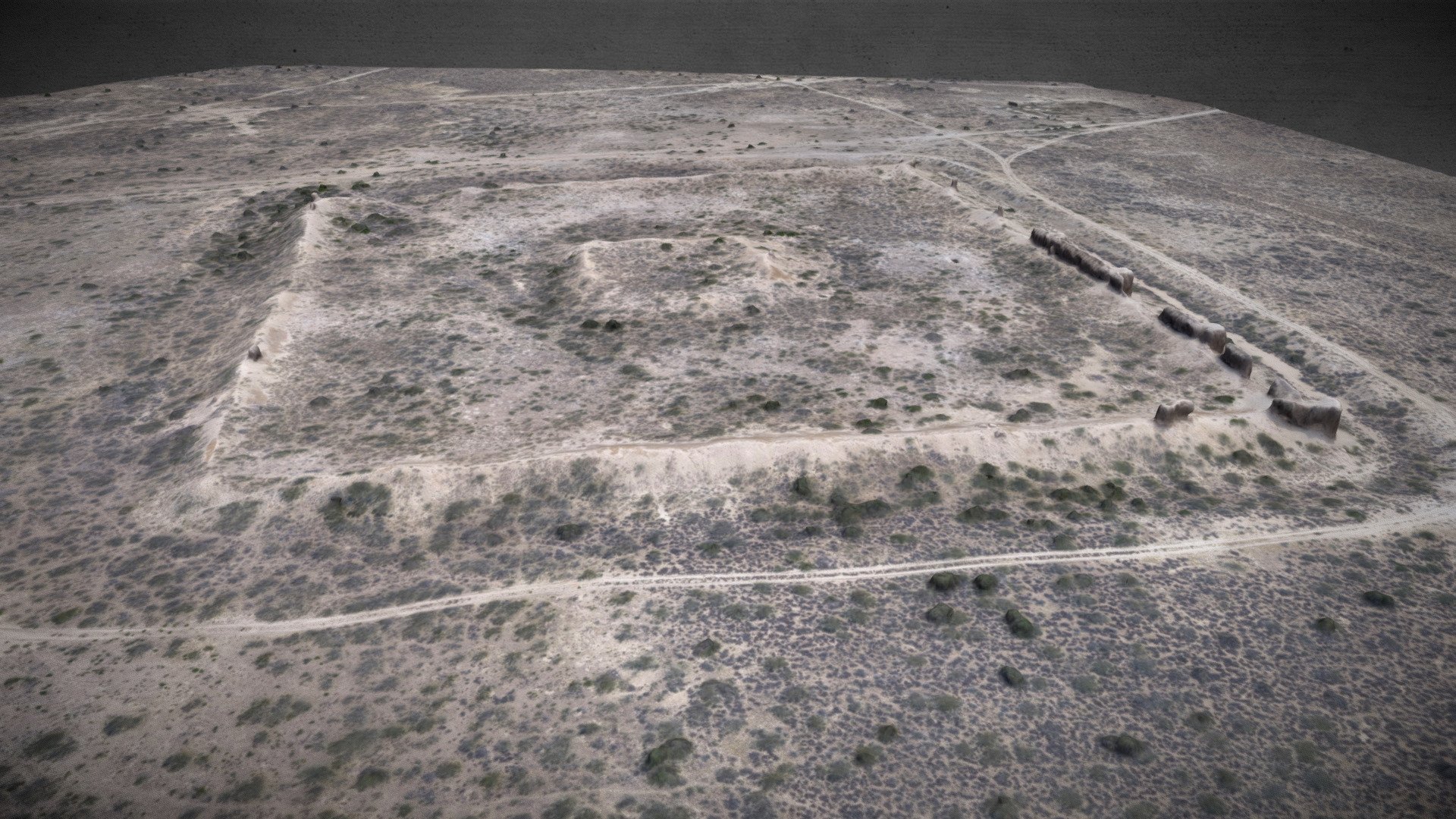ASTANA — The rich, undiscovered sites of Kazakhstan continue to reveal their secrets, with excavations shedding light on the ancient city of Kumiyan, also known as Meiramtobe. Located in the Zhanakorgan district of the Kyzylorda Region, this mysterious site remains only partially explored, offering just glimpses into its storied past.

The remains of ancient city of Kumiyan, also known as Meiramtobe, located in the Zhanakorgan district of the Kyzylorda region. Photo credit: kzvesti.kz Click to see the map in full size. The map is designed by The Astana Times.
Situated approximately 30 kilometers southwest of the modern village of Kelintobe, Kumiyan was a bustling settlement from the 12th to 13th centuries. The city’s ruins are nearly four kilometers from the dried-up Syrdarya riverbed.
The city, which occupied a rectangular area of roughly 210 by 180 meters, was fortified with walls up to six meters in height and three and a half meters in width. Historical records and excavation evidence suggest that with a gate located in the southwest, five towers stood on each side of the city, spaced 35 meters apart. A moat, eight meters wide and nearly two meters deep, encircled the city, providing additional protection. In addition, there was a citadel with an area of 45 by 45 meters in the center of Kumiyan.
Local historian Alimzhan Yerzhanov noted that only a tiny elevation remains on the city’s northwest side, an intriguing feature yet to be fully explored.
“Presumably, these could be remains of inner-city buildings. While studying Kumiyan, scientists uncovered many ceramic artifacts, such as the jugs with elaborately crafted edges, swells and handles. The city’s applied arts were advanced, as seen in the beautifully decorated tableware. The paints used resemble those found in Otyrar, another ancient city in the region,” said Yerzhanov.
Kumiyan’s existence coincides with other ancient cities in the Syrdarya region. The architectural similarities among these settlements suggest that they maintained close ties, possibly through trade and cultural exchange.
The city’s name, Kumiyan, may derive from the Kazakh word kum, meaning sand, hinting at its location in a sandy landscape. However, the origin of its other name, Meiramtobe, remains unclear.
The legend of Kumiyan city’s disappearance
A local legend, passed down through generations tells a story of Kumiyan’s tragic end. Rakymzhan Tursynbekuly, a resident of the Zhanakorgan district, tells about an old lady who lived in Kumiyan city with her only son. They were poor, living off the milk of their only goat. One day, she noticed that someone had drunk the milk and left a gold coin in return. This mysterious occurrence repeated daily, slowly elevating the family’s wealth.

Screenshot from 3D sketch of ancient city Kumiyan. Photo credit: sketchfab.com
The old lady eventually discovered that it was a snake, which enriched the family. The snake spoke and urged the old lady to keep the secret, warning that unveiling the truth would bring disaster to the city.
However, the city’s ruler, curious about the woman’s sudden prosperity, demanded an explanation. Under the ruler’s persistent persuasion and pressure, she revealed the secret, leading to an invasion of snakes that decimated the city’s population. Only two people escaped and joined the cattle drivers in Bukhara. Following advice to protect themselves from a snake bite with a ketmen (an ancient hand tool) and bread placed under their heads, they avoided death.
The legend suggests that this catastrophe may have led to Kumiyan’s demise, though the truth remains uncertain.
The article was originally published in Kazinform


